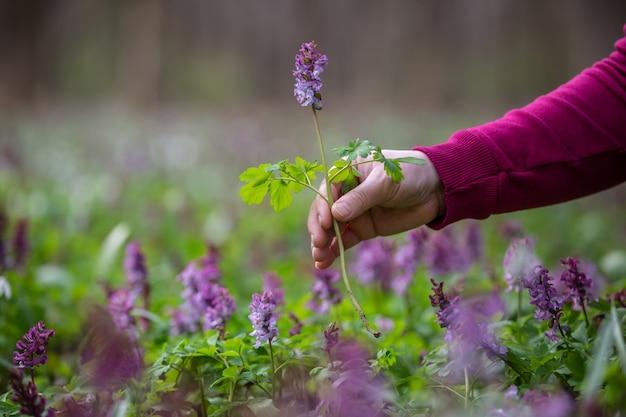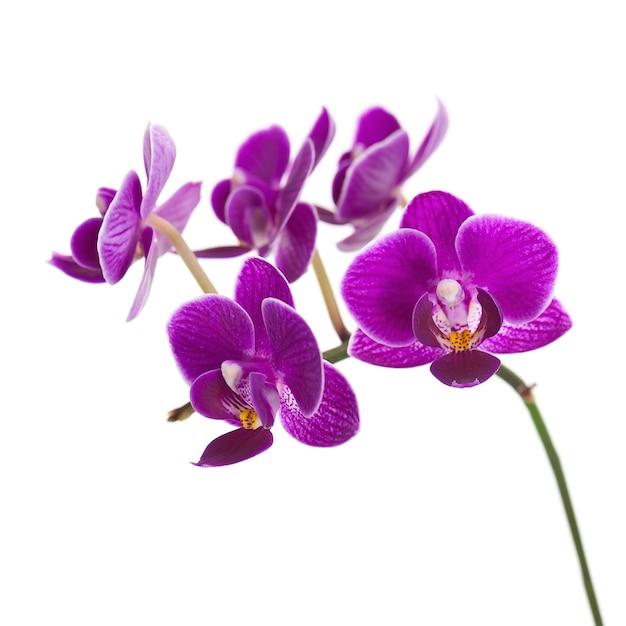Purple is a color that has captivated humans for centuries. Associated with royalty, creativity, and spirituality, purple stands out among other colors. However, have you ever wondered why purple seems so rare in the natural world? In this blog post, we will delve into the intriguing reasons behind the scarcity of purple in nature.
From the vibrant hues of flowers to the colorful plumage of birds, nature is a rich tapestry of colors. But when it comes to purple, it is undoubtedly one of the least common colors to be found in the natural environment. So what makes purple so elusive? Is it simply a matter of chance, or is there a scientific explanation behind its scarcity? Join us as we explore the secrets of this enigmatic color and discover why purple is a true rarity in the world around us.
So, let’s dive into the fascinating world of colors and unravel the mysteries surrounding the rarity of purple in nature.
Why Is Purple So Rare In Nature
The Enigma of Purple
It’s Saturday morning, and you’re lounging on your couch, sipping coffee and pondering life’s mysteries. Suddenly, a burning question pops into your head: “Why is purple so rare in nature?” Well, my friend, you’ve come to the right place. Prepare to embark on a mind-boggling journey into the colorful world around us.
The Astonishing Truth
Let’s dive right in and uncover the astonishing truth behind the scarcity of purple in nature. You see, colors in the natural world are often determined by pigments, and purple is no exception. The primary pigments responsible for creating colors in plants and animals are chlorophyll (green), carotenoids (yellow and orange), and anthocyanins (red, pink, and purple).
Playing Hard to Get
Now, here’s where things get intriguing. While green and yellow pigments are quite common in nature, purple becomes a bit of a diva. Anthocyanins, the pigments responsible for purple hues, are a bit fussier to produce. They require specific conditions, such as a perfect balance of pH levels and the presence of certain minerals.
Anthocyanins, the Magicians
But why do anthocyanins put on such a show? Well, think of them as the magical illusionists of the natural world. They can manipulate the way we perceive colors through complicated tricks of light absorption and reflection. Purple is a result of anthocyanins absorbing certain wavelengths of light while reflecting others back to our eyes. It’s like a grand optical masterpiece!
The Elusive Blueberries
When it comes to natural sources of purple, our fruity friends, the blueberries, take center stage. These little berries flaunt their deep purple hue as a result of the anthocyanins dancing within their cells. From vibrant pancakes to luscious smoothies, blueberries proudly show us the true beauty of purple in nature.
The Royal Connection
Ah, purple, the color of royalty! Have you ever wondered why purple is associated with prestige and power? Well, sit back and let me reveal a colorful historical anecdote. In ancient times, obtaining purple dye was an arduous process. It involved crushing thousands of tiny sea snails, extracting a single drop of dye, and repeating this tedious process over and over again. As you can imagine, this made purple garments a luxury only affordable for the elites.
The Not-So-Purple Flowers
We’ve explored the mysteries of purple, but what about flowers? Surprisingly, many blooms that we consider purple aren’t truly purple at all. Think about delphiniums and irises; their petals may appear purple, but they actually belong to the blue family. It’s all because of our eyes’ interpretation of the complex mix of pigments present in these flowers. So, next time you come across a “purple” flower, remember, things aren’t always as they seem.
Embrace the Rarity
So there you have it, the marvelous truth behind the rarity of purple in nature. From the fickle behavior of anthocyanins to the historical significance of purple dye, purple remains an enigma that both tantalizes and captivates our senses. So let’s celebrate the cherished few instances where purple graces our world, reminding us of its unique and exquisite beauty. Remember, in the grand masterpiece of life, rarity brings that extra touch of magic.
FAQ: Why Is Purple So Rare In Nature
Why is blue and purple so rare in nature
Blue and purple hues are indeed quite rare in the natural world. One of the main reasons for this is the way light interacts with matter. The colors we see are a result of different wavelengths of light being absorbed or reflected by objects. Blue and purple light have shorter wavelengths, which makes them more prone to scattering in Earth’s atmosphere and less likely to reach our eyes. As a result, these colors appear less frequently in nature compared to others.
What color eyes are rarest
While all eye colors are beautiful, it’s said that the rarest eye color is green. Only around 2% of the world’s population has green eyes. Brown eyes are the most common, followed by blue and then green.
Is violet real
Yes, violet is indeed a real color in the visible spectrum. It falls at the end of the spectrum between blue and ultraviolet light. However, since our eyes are more sensitive to blue light than violet, we often perceive violet as a more intense shade of blue.
What is the rarest favorite color
When it comes to favorite colors, everyone’s preferences are unique. However, studies have shown that purple is often considered one of the rarest favorite colors. Perhaps its scarcity in nature adds to its allure!
Are blueberries actually blue
Contrary to their name, blueberries are not truly blue. These delicious berries are actually a deep shade of purple. The blue appearance is only an optical illusion created by the way light interacts with the berry’s skin.
What is the rarest color in nature
While defining the rarest color in nature is subjective, some may consider true blue to be one of the rarest colors. As mentioned earlier, the scattering of blue light in the atmosphere makes it less common in the natural world.
Does purple exist in nature
Yes, purple does exist in nature, but it is relatively rare compared to other colors. Certain flowers, such as lavender and violets, showcase exquisite purple shades. Additionally, some marine creatures, like certain types of seashells or deep-sea creatures, exhibit natural purplish hues.
Why is purple such a rare color
The rarity of purple in the natural world can be attributed to multiple factors. One reason is the scarcity of naturally occurring pigments that produce a true, vibrant purple. Additionally, the way our eyes perceive light and the scattering of shorter wavelengths contribute to the relative scarcity of purple in nature.
Is purple a rare color
Yes, purple is considered a relatively rare color in nature. Its scarcity contributes to its uniqueness and association with luxury and royalty. People are naturally drawn to the rarity of purple, making it a favorite color for many.
What does it mean if your favorite color is purple
If purple is your favorite color, it could indicate that you have a creative and unconventional personality. Purple is often associated with imagination, spirituality, and individuality. Embrace your love for purple and let it inspire your unique perspective on the world!
What is the saddest color
While colors can evoke different emotions in individuals, some studies suggest that gray is associated with feelings of sadness. However, it’s important to remember that the impact of colors on emotions varies from person to person, and cultural factors can also play a role.
Is black an eye color
In terms of natural eye colors, black is not considered one. The human iris contains various pigments that determine eye color, including shades of brown, blue, green, and gray. Black eyes often appear dark brown due to the concentration of melanin in the iris.
What is the ugliest color
Beauty is subjective, so it’s difficult to determine the “ugliest” color universally. However, a specific shade of green known as “Pantone 448C,” also referred to as “opaque couché,” was once considered the world’s ugliest color. It was even used on cigarette packages to discourage smoking!
Is purple a girl color
While societal norms have traditionally associated pink with femininity and blue with masculinity, there are no strict rules when it comes to color preferences. Purple, with its combination of red and blue, is a versatile color loved by people of all genders. Embrace your favorite color, regardless of societal constructs!
What is the rarest eye color for dogs
When it comes to dogs, eye color is more limited compared to human variability. While various shades of brown are the most common, blue eyes are relatively rare but can be found in specific breeds like the Siberian Husky, Australian Shepherd, and Border Collie.
What does a purple light mean
The meaning of purple light can vary depending on the context. In some cases, purple light is associated with spirituality, creativity, or royalty. It can also be used for atmospheric or decorative purposes, creating a visually captivating environment.
Is purple an eye color
Purple is not a natural human eye color. The iris contains pigments that determine the range of eye colors we see, but purple is not among them. However, certain lighting conditions or medical conditions can give the illusion of purple-toned eyes.
What’s the most hated color
While opinions on colors are subjective and vary widely, some studies suggest that the color “muddy brown” or shades resembling feces are often disliked. However, it is important to remember that color preferences are highly individual and influenced by personal experiences.
What’s the prettiest color in the world
Beauty is subjective, and the perception of color aesthetics varies from person to person. However, many find the vibrant hues of nature, such as the rich greens of lush forests, the vivid blues of pristine oceans, or the delicate pinks of blooming flowers, to be among the prettiest colors in the world.
What is the rarest M&M color
As of 2023, the rarest M&M color is the brown M&M. However, it’s important to note that M&M colors can change over time based on consumer demand and marketing decisions.
Can two brown-eyed people have a blue-eyed baby
While it’s less common, it is possible for two brown-eyed parents to have a blue-eyed baby. Eye color inheritance is complex and determined by multiple genes. A combination of recessive genes from both parents can result in a child with blue eyes, even if both parents have brown eyes.

